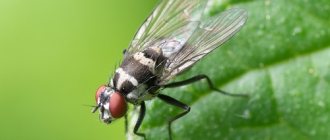On the pages of the Red Book
Butterflies conjure up images of sunlight, warmth, flowering meadows, and summer gardens. Unfortunately, butterflies have been dying out for the last 150 years. Three quarters of the butterflies are on the verge of survival. 56 species are threatened due to environmental changes. Butterflies and moths are recognized as indicators of biodiversity.
They respond quickly to change, so their struggle to survive is a serious warning about the state of the environment. Their habitats have been destroyed, climate and weather conditions are changing unpredictably due to air pollution. But the disappearance of these beautiful creatures is a more serious problem than simply leaving fields without fluttering creatures.
Species of butterflies from the Red Book of Russia
- Alcinous Atrophaneura alcinous.
- Common Apollo Parnassius apollo.
- Felder's Apollo Parnassius felderi.
- Arcte blue Arcte coerula.
- Asteropetes noctuina.
- Bibasis aquilina.
- Parocneria furva.
- Numenes disparilis.
Did you know?
- The smallest known butterfly is no more than 2 mm in size (Acetosia)
- The largest known butterfly is 30 cm (Agrippina)
- Calyptraeustrigata is a very rare species of butterfly, but no less interesting. The males of this species are capable of drinking blood, like mosquitoes.
- The monarch butterfly is a true healer among its species. She is able to recognize the beneficial properties of plants and successfully use them if her fellow creature needs help.
- The Apollo butterfly is the only one that can live where there is snow all year round without experiencing discomfort.
- The most cunning are hawk moths; they have the ability to pretend to be a queen bee, creating a buzz. Using this trick, they enter the bee hive and gorge themselves on honey, which is their delicacy.
Interesting Facts
- Are butterflies dangerous for humans? No, but there is an exception, this is the Saturnius butterfly. It is true that it is not the butterfly itself that is dangerous, but its caterpillar, which secretes poisonous toxins that can even kill a person. (fortunately, such butterflies and caterpillars do not live in our latitudes).
- The migratory monarch butterfly is a true champion in endurance; it is capable of flying up to 1000 km at a time, without even stopping to rest.
- If the monarch butterfly is a champion in endurance, then hawk moths are real record holders in the insect world for speed; they can reach speeds of up to 60 km per hour over short distances.
- Butterflies do not sleep either at night or during the day, since they absolutely do not need sleep.
Lifespan
How long do butterflies live in nature and at home? The lifespan of a butterfly depends greatly on its species and the climate in which it lives. Usually the life of a butterfly is short, lasting from several days to several weeks. However, there are so-called long-lived butterflies that can live up to two years. But they can only live to such a respectable lifespan by the standards of a butterfly at home, since in nature butterflies have many enemies, few of them survive to old age.
Butterfly - benefit or harm?
Like many types of insects, lepidoptera can be both beneficial and harmful. For example, according to the treatises of the ancient Chinese philosopher Confucius, the silkworm caterpillar gave silk to the world. According to legend, Empress Xi-Ling-shi found a cocoon under a mulberry bush, which she mistook for some wondrous fruit. He accidentally fell out of her hands into a cup of tea and became soft from the liquid.
Trying to get it, the empress pulled out a silk thread. In gratitude for this unexpected discovery, the Chinese elevated Xi-Ling-shi to the rank of deity of the Celestial Empire. Silk cocoons are woven by the caterpillars of many species of silkworms and peacock eyes, but the most valuable “silk producer” is the silkworm. This butterfly has been bred in China for thousands of years. For a long time, under penalty of death, it was possible to maintain the secret of obtaining silk, which in other countries was worth its weight in gold.
In addition to the gift of silk, butterflies are also the second most important pollinators of plants, after bees and bumblebees. In the spring, after waking up, adult butterflies need a lot of food. Butterflies feed on the nectar of flowers and carry pollen on their wings, thus pollinating plants.
But butterflies also cause a lot of harm. For example, caterpillars of cabbage butterflies, rutabaga, and buckthorn (Fig. 1-6). These and many other species of white moths cause considerable damage to agriculture.
There are also small butterflies - moths. There are also many species and families of them. There are moths that parasitize on the skin of animals, in grain storage facilities. There are also so-called “fur moths” and “furniture moths”. The larvae of these butterflies feed on what they hatch on and cause a lot of trouble to people.
Project with presentation, 4th grade
Project of a 4th grade student on the topic: Machaon Butterfly
Author : Kamilla Pakhmutova Supervisor : Victoria Viktorovna Yuryeva Introduction. Relevance of the topic. Butterflies are one of the most beautiful living creatures on Earth! They look like flowers come to life, the brightness of the color of their wings is truly fabulous! It is no coincidence that the butterfly is called a symbol of beauty and joy. People have always loved these elegant and cheerful fliers. This is reflected even in the names that scientists came up with for them. The god of beauty Apollo “turned” into a beautiful butterfly. A giant butterfly living in India is named after Atlas, one of the legendary titans who held the firmament on their shoulders. The butterfly Aglaya is named after the ancient Greek goddess of joy, the Harpy is named after the goddess of the whirlwind, and Hebe is named after the goddess of youth. Delicate, lovely creatures - butterflies - invariably delight our eyes. Looking at them, we become closer to nature, relieve the stress of our fast, hectic life. “The miracle of states transforming one into another, this miracle of the transformation of a sluggish caterpillar, a stupid pupa into a tenderly beautiful butterfly, deeply touched a person, became for him a semblance of his own spiritual transformations, gave him the hope that someday he would tear himself off the ground and rise into the light-illuminated spheres of eternity." E. Eppley I have always been fascinated by butterflies. Relaxing with our parents in nature, we admire and watch how they fly, how they silently land on a flower. I wanted to learn as much as possible about butterflies. In nature, it is difficult to track the stages of transformation of a caterpillar into a butterfly, so I decided to do it at home. There are a lot of interesting things in their lives, and this knowledge will be useful to me. Goal: - at home, observe the mystery of the transformation of a caterpillar into a butterfly and make your contribution to increasing the butterfly population. Objectives: - study the concept of “lepidopterology” - the science of butterflies;
— get acquainted with scientific and educational literature that talks about butterflies (Butterflies in myths, legends and paintings); — in practice, track all stages of butterfly development; — prove that the world of butterflies is diverse; — get acquainted with the way of life of butterflies; - determine the importance of maintaining an environmentally correct attitude towards the surrounding nature, be able to explain why there is no need to catch butterflies. - preserve the beauty of the surrounding world - butterflies, raise a butterfly with your own hands and release it into the wild. Chapter 1. Lepidopterology - the science of butterflies
A beautiful word?
A lepidopterist is a person who studies butterflies. The name of the profession, like the word lepidopterology - the science of butterflies, comes from the Latin lepidoptera - butterfly. Lepidopterists often combine their work with the profession of ecologist, geographer or ornithologist. A person who is simply interested in butterflies is called a lepidopterist. 1.1. The diversity of the world of butterflies About 200,000 species of butterflies are known, all of them are characterized by the presence of special flattened hairs on the wings - scales. Children often think that butterflies are covered with flower pollen, and if you wipe it off, then it’s easy to sprinkle new pollen on top, for example, from the stamens of lilies. However, this “pollen” is scales. If they are erased and their wings are frayed, the fragile insects will not be able to fly and will not live long. Many Lepidoptera have well-developed proboscis. All butterflies develop from caterpillars that pupate. Some butterflies feed on the nectar of flowers, others on tree sap and fermented fruit juice, while others don’t mind snacking on animal droppings and tears, as well as dirt to replenish the lack of mineral salts. It is curious that there are even “vampire” butterflies. Only males of some small cutworms from the genus Calyptra are “vampires,” and females of Calyptra prefer fruit juice. In Primorye, and sometimes in the Moscow region and the Leningrad region, the butterfly Calyptra vasilifolia is found (the species was discovered back in 1790!). This is a small light gray cutworm. On occasion, she can not only drink blood from an open wound, but also pierce the skin with her proboscis. There are wingless butterflies! For example, a female of the Ancient Volyanka. This butterfly is also called the common brushtail. Many moths do not feed, but live only from the reserves accumulated by the caterpillar. Having turned into a butterfly, the female does not even leave the cocoon. Such a motionless, fat female produces many eggs, about a hundred, and all of them are covered with a cocoon. This is how nature takes care of the future offspring of the moth - there will be many caterpillars, and they are protected by a dense cocoon. In places where rare white water lilies are found, you can find another submarine butterfly - the water lily water moth. Grown-up caterpillars of this species construct shelters from leaves, filling them with air bubbles. Caterpillars carry this air sac with them everywhere. The caterpillar pupates in the same bag. The newly born butterfly (both sexes of the water lily moth are winged) floats to the surface like a buoy. Having dried on the first leaf that comes across, the butterfly flies away. It is difficult to study aquatic insects, so there is not much information about them. This is only a small part of the entire diversity of the world of butterflies, which amazes with its diversity of species, colors, and shapes. 1.2. Butterflies in myths, legends and paintings. The rapid flowering of Lepidoptera occurred in the middle of the Cretaceous period (about 100 million years ago) and butterflies have been exciting the human imagination for several millennia. In the Paleolithic era, the butterfly personified the goddess “Great Mother,” who owned all things on earth. There were beliefs that witches could turn into butterflies, that butterflies promote conception and portend war (for example, the Romans called the butterfly feralis - “fierce”), that butterflies are the souls of the dead. Additionally, in many cultures, the butterfly symbolizes the transitory nature of joy. The ancient Romans believed that butterflies were flowers blown by the wind. The Egyptians left images of these winged creatures on frescoes 3.5 thousand years ago. It is quite possible that the art of mummifying the dead arose from imitating the actions of a caterpillar turning into a butterfly. People surrounded butterflies with legends and myths. Ancient ideas about them are associated with the most important concepts for humans: life and death, soul, love, happiness. Elves, spirits of the air who came to us from Scandinavian mythology, were depicted as small people with butterfly wings. The ancient Japanese classics first described the custom of releasing a pair of live butterflies at a wedding. In Japan, this insect is considered a symbol of aesthetic joy and feminine fussiness; a pair of butterflies symbolizes marital happiness. Buddhists treat butterflies with the deepest respect: after all, Buddha addressed a butterfly with his sermon. In Zaire, Central Asia, Mexico, and New Zealand, an image of the soul in the form of a butterfly is found. In Ancient Mexico, the butterfly was an attribute of the god of vegetation, spring and love, the “Prince of Flowers” Xochipilla. In addition, she was associated with the Sun and was a symbol of swaying fire. In different regions of Russia, when they see a butterfly or moth, they say: “Someone’s darling is flying.” Sometimes they are called souls or darlings. According to Poles, the soul of a dying person leaves the body in the form of a butterfly. In Christianity, the stages of butterfly development represent life, death and resurrection, so the butterfly is sometimes depicted in the hand of the Christ child, which symbolizes the rebirth and resurrection of the soul. In paintings depicting life in paradise, the soul has wings, which the Creator places in the body of Adam. The Garden of Eden is associated with an abundance of flowers and fluttering butterflies. After flipping through several catalogs of paintings, I was able to find several biblical scenes with images of butterflies. In the painting by an unknown master (c. 1410) “The Garden of Eden”, the scene takes place inside a blooming garden surrounded by walls: flowers, fruits, butterflies and birds have a symbolic meaning, “describing” the virtues of the Virgin Mary.
This idea was further developed in the idea that all butterflies are souls that were late on earth, some forever, others awaiting departure to purgatory.
Therefore, any randomly encountered butterfly may turn out to be the soul of a relative or friend, and under no circumstances should it be killed or harmed in any way. Chapter 2. Lepidopterology and its role in the life of modern man.
2.1. The history of my collection. In 2010, during the summer holidays, I visited my grandmother in the Republic of Mari El. My grandmother and I went to the garden to collect dill for winter preparations. And imagine our surprise when, upon arriving home, we discovered a “little guest” - a caterpillar that we brought along with the greens. Children always have a lot of questions for their parents: how, where, why? When my next question “Where do butterflies come from?” I received the answer “from the caterpillars” and I wondered how this happens. It is difficult to track all stages of butterfly development in nature, so I decided to do it at home. I put our little guest in a jar along with the branch on which he was sitting. Every day I brought new branches of food and my caterpillar grew up. The caterpillar was tiny, but it had a huge appetite. There comes a moment when her belly can no longer accommodate everything she eats and is about to burst. Then the caterpillar finds a secluded place and waits patiently. After a day or two, the skin on the back near the head bursts, and a renewed caterpillar crawls out of it, already enlarged and terribly hungry. This process is called molting. This was repeated 5 times until, at the last molt, she turned into a motionless pupa. Some more time passes and the pattern of future wings begins to shine through the covers of the pupa, colored spots appear, antennae are released and followed by emerald eyes. (Fig.7.)
Gradually, the entire butterfly emerges from the cocoon and begins to straighten its amazingly beautiful wings. In 2010, I didn’t know which butterfly would appear, but it didn’t matter to me, since the goal was to track the stages of butterfly development. And in 2012, I was already purposefully looking for a swallowtail butterfly caterpillar in order to repeat the previous experiment. I already knew exactly where the caterpillar lives and what it eats, and my efforts were not in vain. I found the caterpillar in the Republic of Mari El, the butterfly appeared when we arrived home in the Moscow region. Thus, I made my contribution to increasing the population of swallowtail butterflies in the Moscow region. 2.2. Swallowtail butterfly. The swallowtail was named by the Swedish naturalist Carl Linnaeus in honor of the surgeon, the son of Asclepius and Epione, who took part in the Greek campaign against Troy during the Trojan War (1194 BC - 1184 BC). The female swallowtail lays eggs, hovering in air, on the underside of a leaf or on the side surface of the stem of forage plants. During one flight, the butterfly lays 2, sometimes 3 eggs. Just one female lays up to 120 eggs in her life. The eggs are hemispherical in shape, greenish or gray-yellow in color with a reddish-brown top and middle part; over time, their color changes to bluish, with a black pattern. Egg stage - 6 - 7 days. (Fig. 1)
Caterpillar 1st generation of caterpillars from May to June, 2nd - from August to September. The initial color of the caterpillar is black, with red “warts” and a large white spot on the back. As the caterpillar grows, the warts disappear and the caterpillar becomes green in color with black transverse stripes. On each black stripe there are 6 - 8 orange-red spots. (Fig. 2 and 3)
When irritated, the caterpillar pushes out a gland behind its head called the osmeterium. It consists of two long orange-red horns. In case of danger, the caterpillar moves the osmetria outward, lifts the front part of the body up and back, secreting an orange-yellow liquid with a pungent unpleasant odor. Only young and middle-aged caterpillars protect themselves in this way; adult caterpillars do not move their glands when in danger. (Fig 4)
Prefers to feed on flowers and ovaries, less often on leaves on food plants. By the end of its development, the caterpillar almost does not feed. (Fig. 6)
Pupation occurs on the stems of the host plant or on neighboring plants. The color of the pupa depends on the color of the substrate - summer pupae are green or yellowish, covered with small black dots. Overwintering pupae are brown in color, with a black head end and thick horns on the head. In Central Europe, the summer pupal stage lasts 2-3 weeks, and for wintering pupae it lasts several months. (Fig. 5,8)
The wingspan of males is 64-81 mm, females - 74-95 mm. The main background color of the wings is intense yellow. The fore wings have black spots and veins, and a wide black border, with yellow moon-shaped spots at the outer edge of the wing. The hind wings have “tails” up to 10 mm. The color of the hind wings is with blue and yellow spots, a red-brown eye surrounded by black is located in the corner of the wing. (Fig. 9, 10, 11)
Swallowtail is a rare species and is listed in the Red Book.
The decline of the species is primarily due to the destruction of the butterfly’s habitats, as well as due to trapping. It lives in well-warmed areas where forage umbrella plants grow. In the north it is found in different types of tundra. In the forest belt, it prefers meadows of various types, forest edges, clearings, roadsides, and river banks. Single individuals with high migration capabilities can fly into large cities. Conclusion.
At the moment, I have two Swallowtail butterflies in my collection, which I raised and released into the wild. And for myself I took photographs of the process of turning a caterpillar into a butterfly. Now I know how an amazingly beautiful butterfly emerges from an inconspicuous caterpillar. In the future I plan to expand my collection. And in the summer of 2013 I would like to grow a Peacock butterfly. From the literature I learned where the caterpillar of the Peacock butterfly lives and what it eats. (Fig.12,13)
It would seem that the life of butterflies is carefree, but they have a lot of enemies (birds, lizards, frogs). The color of the wings and poison protect butterflies from natural enemies. The butterfly is powerless only against humans! The destruction of butterflies leads to a disruption of the natural balance (if we catch butterflies, we harm both butterflies and flowers). Currently, more than a hundred species of butterflies are listed in the Red Book (including Swallowtail). They were harmed a lot by children racing with a net in their hands. Anyone who is seriously interested in butterflies can, of course, collect and design a collection - a necessary and useful teaching aid. But for you and I, non-specialists, it’s better to admire butterflies in early spring and summer. Not a single collection with dead insects frozen on pins will bring that living joy that you experience when you see this wonderful creature being born and fluttering from your hands into the unknown world. There is an expression that beauty will save the world. My passion for butterflies helps me reveal the beauty of the world around us through its small but multifaceted world of butterflies. My new hobby gives me ideas for creativity. I really love sculpting from plasticine and butterflies have appeared in my plasticine collection. In addition, I learned to be attentive to what surrounds us and to patiently move towards the intended goal. Since all processes occurring in nature are not instantaneous, and in order to achieve results, sometimes it is enough to be patient and wait. Studying where they live, what they eat, and how butterflies are born, I became acquainted with the science of biology. We haven’t studied it at school yet, but I was interested in this science, which in the future will be able to provide answers to many of my questions. But the main value of my collection is that with its help my inner world is enriched. She helps me broaden my horizons. Thus, we can conclude that as my collection grows, I grow as a person.
Review.
Impressions received in childhood sometimes determine a person’s future work and way of life.
The child will grow up, but the personality traits he has developed, spiritual and moral values, and moral standards will remain. It is they who will guide an adult as he goes through his life’s journey, sometimes making difficult choices. While working on this project, Camilla not only became acquainted with where they live, what they eat, and how butterflies themselves are born, but also drew the attention of her family members to study this issue. After all, the family passes on both cultural traditions and the experience of predecessors, which has developed over many years, and lays down a model of behavior for the child for the rest of his life. The girl’s family and friends provided full support as soon as her interest in studying metamorphosis awoke. They didn’t just show pictures, didn’t brush it off with the words “When you grow up, you’ll understand!”, but offered to see everything with your own eyes, to grow your own butterfly from a nondescript caterpillar. Working on a project requires great effort, diligence, perseverance and attention. All this was fully demonstrated by Camilla Pakhmutova. Almost all children are interested in butterflies to one degree or another, but not everyone’s interest goes beyond simply admiring or drawing. An attempt to understand the connection between the caterpillar and the beautiful butterfly led Camilla to an almost scientific study of the mechanism of this transformation. During her environment lessons in 2nd grade, she first showed photographs of a butterfly that appeared before her eyes, and in 4th grade, having mastered working in the Microsoft Power Point graphics editor, she invited her classmates to get to know the subject of her research better—the swallowtail butterfly. She managed to surprise and amaze her classmates, and most importantly, to draw their attention to the problem of the disappearance of entire species of these insects and show the possibility of providing assistance in preserving their numbers in nature. I consider the main achievement of this work to be the fact that in the process of working on the project, Kamilla Pakhmutova began to realize how research affects her own development. She will not stop there, and as a teacher this only makes me happy. Bibliography. 1. The world around us.
Textbook For 4th grade. beginning school At 2 o'clock Part 1/A.A. Pleshakov, E.A. Kryuchkova.-4th ed. -M.: Education, 2009 - 207 p. Presentation on the topic: Swallowtail butterfly
We recommend watching:
Project for grades 3-4 with a presentation on the topic: Flowers Application of the project method in extracurricular activities in grades 4-6 Project of 4th grade students Project work of a 4th grade student. Rogozhsky Park
Similar articles:
Stages of working on a project in elementary school, grades 3-4
Projects in elementary school in mathematics, grades 3-4
Projects in elementary school, grades 3-4. The world
Methodology for working on a project for gifted students in 4th grade
Event at school to develop responsibility and citizenship
Nutrition
What do butterflies eat? Pollen and nectar from flowering plants are the main diet of butterflies. Some species of butterflies are not averse to feasting on tree sap and rotten fruit. There is also such an interesting butterfly as the dead-headed hawk moth, it is notable for the fact that it likes to fly into the hive to
bees feast on their honey.
Sometimes among butterflies there are real gourmets, for example, some tropical butterflies drink tears
turtles crocodiles.
Interesting fact: among butterflies, there are also those that completely lack mouthparts. How do they eat?! But in no way, the fact is that in order to maintain life, they use up the reserves of nutrients that they accumulated when they were still caterpillars. One such unusual butterfly is the Madagascar comet. Of course, life expectancy with such nutrition (or rather the complete absence of it) is only 2-3 days.
Among the numerous kingdom of butterflies, there is also a real vampire butterfly, which, like
The mosquito feeds on the blood of other animals.







